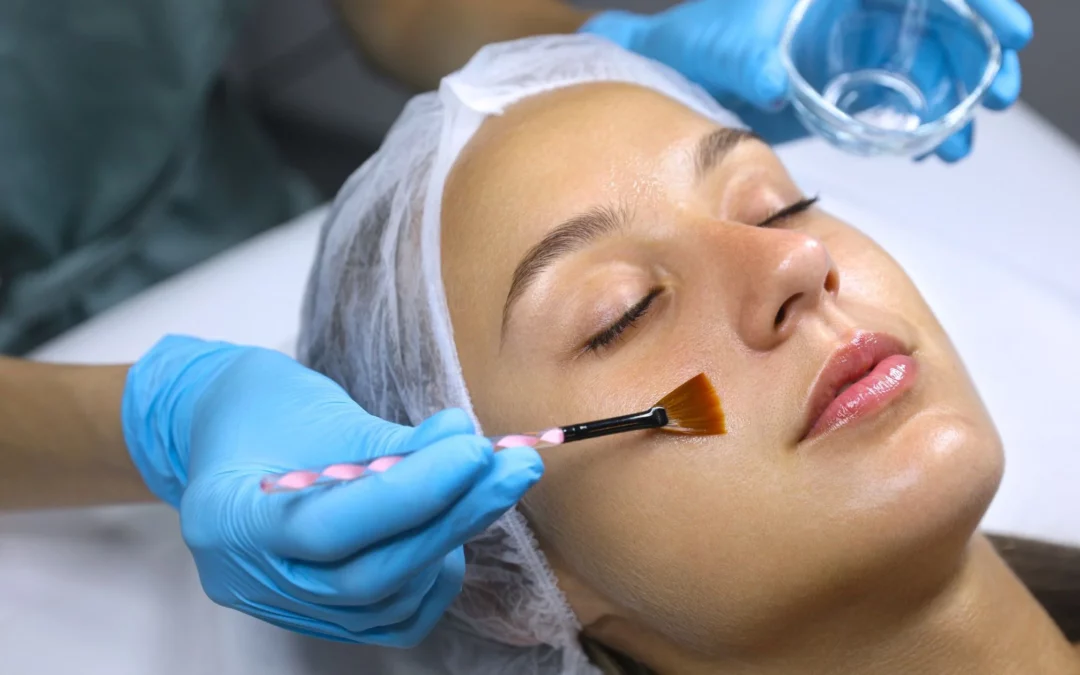Melasma, a common skin condition characterized by patches of darker pigmentation on the skin, can significantly impact one’s self-esteem and confidence. The quest for effective treatments has led many individuals to explore various options, and among them, chemical peels have emerged as a promising solution.
In this blog post, we’ll delve into the world of melasma treatment, focusing on the potential effectiveness of chemical peels. If you’re seeking ways to address melasma and rejuvenate your skin, read on to discover the insights we have to offer.
Understanding Melasma
Melasma, often referred to as the “mask of pregnancy,” manifests as hyperpigmented areas, typically on the face, cheeks, and forehead. The condition is triggered by a combination of factors, including hormonal changes, genetics, and sun exposure.
These factors contribute to the overproduction of melanin, the pigment responsible for skin color. The result? Darker patches that can be frustrating to manage.
What are Chemical Peels?
Chemical peels are a widely used cosmetic procedure designed to exfoliate the skin and improve its texture and appearance. These treatments involve applying a chemical solution to the skin, which causes the top layer to peel off, revealing fresher skin beneath.
Chemical peels are classified based on their intensity: superficial, medium, and deep. Each type targets different skin concerns, making them versatile options for addressing a range of conditions, including melasma.
The Mechanism Behind Chemical Peels
The science behind chemical peels is intriguingly simple yet effective. By removing the top layer of pigmented skin cells, chemical peels facilitate the growth of new, less pigmented cells. This renewal process is also known to stimulate collagen production, which enhances skin texture and tone. Collagen, a protein responsible for skin’s firmness and elasticity, contributes to the overall improvement of skin quality.
Effectiveness of Chemical Peels for Melasma

Scientific research and studies have provided valuable insights into the efficacy of chemical peels in treating melasma. While results may vary based on factors such as peel type and individual skin characteristics, many individuals have experienced positive outcomes.
It’s important to note that treating melasma often requires multiple sessions for optimal results. A comprehensive consultation with a dermatologist or skincare professional can help determine the most suitable approach for your specific needs.
Considerations Before Getting a Chemical Peel
Before embarking on a chemical peel journey, consulting a qualified professional is paramount. Dermatologists and skincare experts possess the knowledge to assess your skin type, melasma severity, and medical history, tailoring a personalized treatment plan accordingly.
Temporary side effects such as redness, peeling, and sensitivity are common post-peel occurrences. However, these discomforts are typically short-lived and well worth the potential benefits.
Post-Peel Skin Care and Maintenance
- Apply broad-spectrum sunscreen daily to prevent further pigmentation.
- Use gentle cleansers and moisturizers to support healing.
- Avoid harsh skincare products that could irritate sensitive post-peel skin.
- Stay hydrated to maintain skin’s natural moisture balance.
- Follow the skincare regimen recommended by your dermatologist for optimal results.
Conclusion
In the quest for radiant skin and renewed confidence, chemical peels offer a promising path to treat melasma. By expertly addressing pigmentation and stimulating collagen, these treatments hold the key to a brighter future for your complexion.
Remember, personalized guidance from skincare professionals is vital. Step into a world of healthier, luminous skin and embrace the transformation.
Ready to embark on your journey to flawless skin? Contact Applied Aesthetic at (516) 243-9907 to schedule your consultation. Discover the beauty that awaits you in Garden City, NY.





